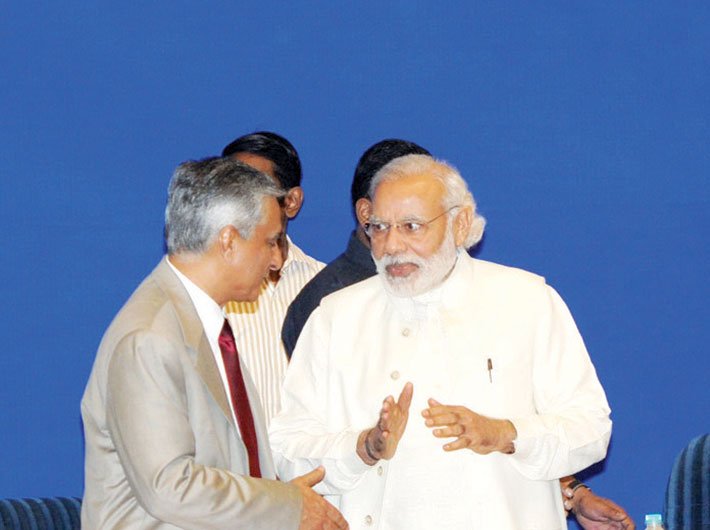It reiterated primacy of judiciary in the final section of judges but envisaged a joint effort to improve the process leading to appointment
On October 16, the supreme court quashed the National Judicial Appointments Commission (NJAC) Act but set the ground for reform in the judiciary-led collegium system of appointment of judges.
Though the question as to who enjoyed primacy in the appointment of judges stood answered by the verdict, the ongoing executive-judiciary tussle has kicked off a second round of battle on the issue outside the court. While such postures are meaningless in the face of an authoritative pronouncement by court, the conflict has come in way of revamping the collegium system which had been one of the main concerns of the court and the consumers of justice.
While the two organs are engrossed in a fight which can never lead to a decisive end, immediate concerns of the people who are more interested in transparency, accountability and timely filling up of vacancies – than who appoints judges – stand ignored.
The stalemate over appointment of judges on account of the executive- judiciary tussle has hit the justice delivery system hard with a vacancy of about 45 percent in high courts. The vacancies have crossed the 400-mark while the power struggle had held up crucial changes required in the memorandum of procedure (MoP) to usher in transparency and accountability in the process for selection and appointment of judges.
While a new MoP was being framed on the directions of the supreme court to ensure transparency and accountability in the collegium system, it had revived the conflict over the role of the executive and the judiciary in the appointment process – an issue already settled by the court.
The question as to who should appoint judges stood answered in October 2015 with the constitution bench of the supreme court quashing the NJAC Act. Though the law for constitution of NJAC was held to be unconstitutional, the existing collegium system also failed to pass the judicial muster on account of lack of transparency, accountability and failure to check bad appointments.
In a separate judgment two months later, the bench ordered the government to frame a new MoP in consultation with the chief justice of India to improve upon the system.
Though there was no bar on the executive and the legislature making another attempt to wrest back power of appointment from the judiciary, there seemed to be no occasion for a conflict with the executive attempting to interfere with the primacy of judges in the appointment or the judiciary resisting reforms in terms of the mandate of the judgment.
The judgment was clear. The judges were to have primacy in appointments to ensure independence of judiciary but the government had a role in ensuring that there was accountability and transparency in the process.
Going by the recent outburst (during a hearing in court) by the CJI over the government sitting on recommendations for appointment and the response of the law minister, the conflict was evident.
Reacting to CJI TS Thakur’s threat to pass judicial orders over delay on part of the government in clearing appointments, law minister Ravi Shankar Prasad obliquely referred to the resistance from the judiciary to procedural reforms in the collegium system. “We are equally keen that the process to finalise the memorandum of procedure does not delay the appointment of judges to high courts. The executive and the judiciary need to work together on this,” Prasad told the Times of India.
Undoubtedly, stalling appointments on account of differences over MoP was wrong. But this reflected the rift in the relationship between the judiciary and the executive and also the fact that the conflict went beyond differences over some clauses in the MoP.
Taking the issue to people’s court, CJI Thakur, in less than an hour after prime minister Narendra Modi’s Independence Day address, questioned the absence of any reference to vacancies in judiciary in the ceremonial speech delivered from the ramparts of the Red Fort.
Both the government and the judiciary need to realise that they were bound by the judgment. While the government cannot take away primacy from the judiciary, the judiciary cannot continue to resist changes in the collegium system which had lost favour with the people.
Under the existing legal scheme, the judges cannot simply reject proposals by the government for transparency and accountability in the name of independence of judiciary as long as they have a final say in matters of appointment.
Justice Madan Lokur, who joined the majority in quashing the NJAC, clearly indicated in his judgment that primacy to judiciary did not take away the responsibility and role of the government in the appointment process.
“It is true that there has been criticism [sometimes scathing] of the decisions of the collegium, but it must not be forgotten that the executive had an equally important participative role in the integrated process of the appointment of judges. That the executive adopted a defeatist or an I-don’t-care attitude is most unfortunate,” Justice Lokur said.
He went on to state that the collegium system had not completely relegated the role of the government in the appointment process. “The collegium cannot be blamed for all the ills in the appointment of judges – the political executive has to share the blame equally if not more, since it mortgaged its constitutional responsibility of maintaining a check on what may be described as the erroneous decisions of the collegiums,” he added.
With criticism of the collegium system in the minority judgment of justice J Chelameswar forcing the constitution bench to order a reform in the procedure, the judiciary needs to realise that mere cosmetic changes in the collegium system would not help as the system stood discredited.
There had been criticism of the collegium system from within and outside but it was probably for the first time it got recorded in a judicial order. Justice Chelameswar stated in his dissenting judgment that the collegium system “in its operational reality is perhaps not the best system for securing an independent and efficient judiciary”.
Earlier, justice Ruma Pal, who had been a member of the collegium, had spilled the beans in a lecture delivered after her retirement. “Consensus within the collegium is sometimes resolved through a trade-off resulting in dubious appointments with disastrous consequences for the litigants and the credibility of the judicial system. Besides, institutional independence has also been compromised by growing sycophancy and ‘lobbying’ within the system,” she said.
Finding it difficult to ignore the dissent, the constitution bench sought a fresh MoP dealing with eligibility criteria, transparency in the appointment process, establishment of a secretariat in high courts and the supreme court, the procedure for dealing with complaints and provisions for ensuring accountability etc.
A draft forwarded by the government had failed to break the ice with the CJI-headed collegium objecting to some provisions which, in its view, would affect independence of the judiciary.
Though there has been no transparency in framing of the MoP, media reports suggest the CJI had objections even to provisions which directly did not take away the primacy of judges in the final selection of candidates.
The CJI reportedly had objections even on recording reasons for rejecting the claim of a senior while elevating his junior as a supreme court judge. Though the files can be kept under wraps for a decade or so, the need for reasons will only ensure accountability and keep a check on arbitrary decisions.
The collegium may also not be justified in reportedly opposing some sort of involvement of other judges. In a scathing comment on lack of transparency in appointment, justice Chelameswar had stated that the records were beyond the reach of even judges of the supreme court.
Further, there is no reason to object to provisions which enlarge the scope of the process of consultation or provide for names coming from various quarters or envisage a committee to collect background information on candidates as long as the judiciary has a final say on appointing a person as a judge.
The judiciary has often resisted reform mooted from outside. Consider, for example, the order under the RTI Act directing disclosure of information pertaining to appointments. But now the direction for reform has come from the supreme court itself and is binding. n
Singh is a Delhi-based lawyer.
(The article appears in September 1-5, 2016 edition of Governance Now)



